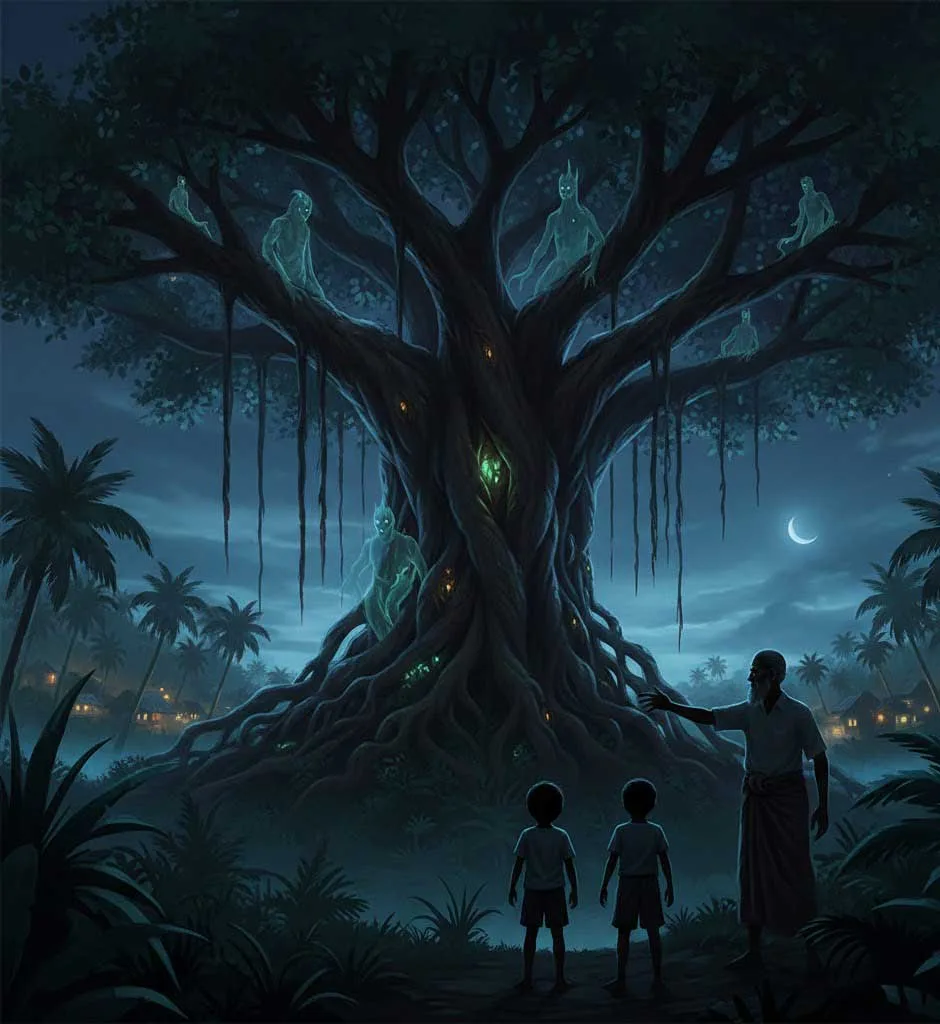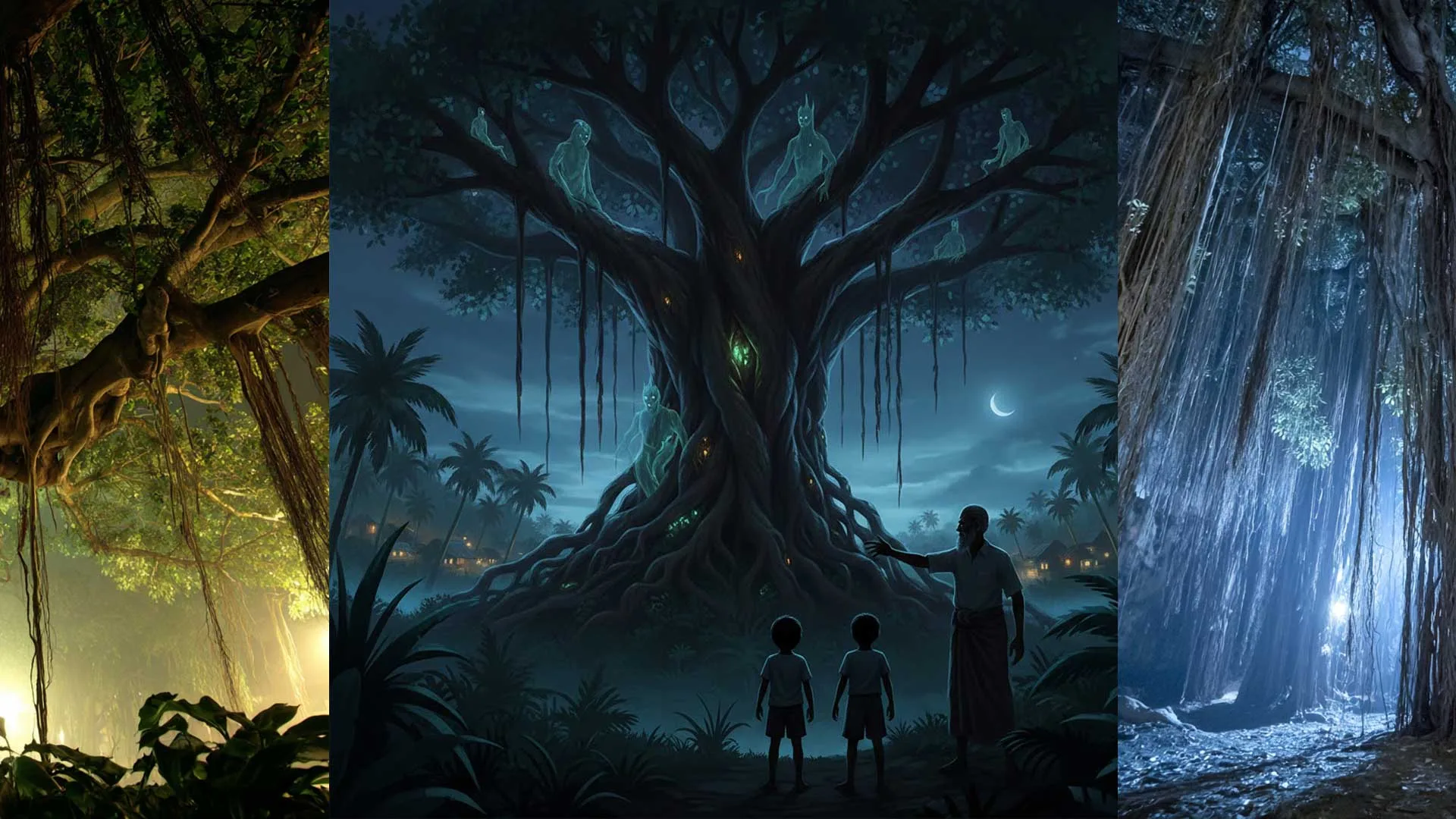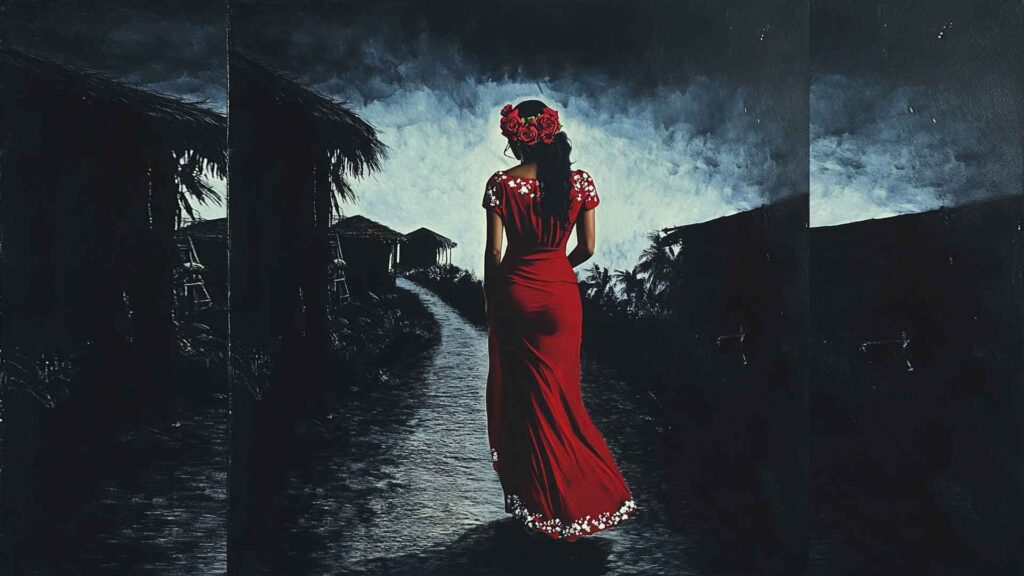
When we were children in the mid-80s, living on the enigmatic island of Fuvahmulah, our minds were filled with many superstitious beliefs. One such belief that frightened us came from scary stories about trees—from beautiful flowering plants to large trees on the roadside and deep in the jungle. I can recall tales of certain trees that attracted spirits. The screw pine tree, the poison bulb, and the banyan tree (locally known as nika) all weighed heavily on our imaginations. Elderly people advised us to avoid such trees even in the daytime and to never go near them at night.
In this chronicle, I am writing about the banyan tree. There are many superstitious beliefs and pieces of folklore about this tree in the Maldives. We have a rich tradition of folklore, especially those involving spirits. People describe and give many names to the spirits they encountered—or believed they encountered.
A major belief about banyan trees in the Maldives is that these trees are dwelling places of spirits and jinn. The tree is majestic in appearance but also eerie—its aerial roots and the intricate patterns of its branches create an otherworldly look. People associate this tree with the supernatural. Some common beliefs were to avoid standing or sitting under a banyan tree after sunset, that jinn are attracted to large, old trees with many aerial roots, and that strange sounds or movements around banyans should be taken as signs of spirits.

Magicians also used these large trees to perform black magic. Before the widespread adoption of strict Islamic practices, Maldivian rituals of sorcery (fanditha) occasionally took place near banyan trees, according to some historical sources. Some believed these trees served as gateways between the human and spirit worlds. Sorcerers believed that banyan roots and bark held spiritual power. Rituals requiring secrecy or spiritual influence were often done under these trees at night. Even today, some islanders avoid cutting a very old banyan tree out of fear of disturbing spirits.
The banyan tree is also regarded as sacred and protected on some islands. In ancient times, a massive banyan tree often stood at the center of community life. Although feared at night, it was respected during the day. The tree served as a place for community meetings, a landmark believed to bring blessings, and a tree that could not be cut without ritual permission, due to fear of spirit retaliation. This dual feeling—fear and respect—was common in Maldivian folk tradition.
If the tree was harmed, some believed illness and bad luck would follow. Folklore across different atolls includes warnings that cutting or damaging a banyan tree would lead to sickness; children were told not to play too close to the roots; and people reported seeing “dark figures” or feeling “pressed” (a common description of jinn encounters) near the tree at night. Some tales were used simply to keep children from wandering into dense vegetation.

Some folktales feature banyan tree jinn appearing in human form, strange lights or figures seen at night, and fanditha practitioners summoning spirits by tying objects to the hanging roots.
Although these deep superstitious beliefs persist to this day, the banyan tree remains significant. The banyan tree in the Maldives is one of the largest and longest-living trees in the islands. It is visually dramatic, with hanging roots and deep shade, and the tree is associated with fanditha, an important part of pre-Islamic cultural memory. Its powerful presence in the landscape helped tie it to beliefs about spirits and magic.
Stories of the supernatural have long surrounded banyan trees across the Maldives. Tales of spirits, jinn, mysterious happenings, and encounters tied to these trees appear in many different communities, each reflecting a deep cultural belief in the unseen world. Though the details of the stories vary, they all show how people viewed the banyan tree as a powerful and sometimes dangerous presence. These widespread traditions reveal that superstitious beliefs were not isolated to one region but prevailed throughout all the islands of the Maldives.
In Maldivian tradition, according to the Spanish writer Xavier Romero-Frias in his book The Maldive Islanders, the banyan tree becomes symbolically linked to the dangerous spirit Baḍi Ferēta, a ghost said to have originated from a cruel, arrogant nobleman exiled long ago to Fuvahmulah. After his death, he transformed into a nocturnal spirit who hides in dark, humid, unclean places and haunts people, firing coconut-flake “bullets” that cause painful skin disease.
Although Baḍi Ferēta is associated mainly with Fuvahmulah, variations of this spirit appear across the Maldives. In Malé, he is said to have lived near a house surrounded by thick vegetation and large shady trees, reflecting his affinity for dark, overgrown spaces.
Romero-Frias compares this spirit to South Indian guardian and demon figures whose power is tied to lush vegetation—especially the banyan tree. The banyan is the throne of Ayyanār, an ancient South Indian village god who, like Baḍi Ferēta, wanders at night, carries weapons, protects crops, and dwells in deep shade. Thus, the banyan tree becomes a symbolic anchor for spirits who both threaten and guard rural life.
Through this connection, Baḍi Ferēta—despite his dangerous reputation—also appears as a banyan-linked guardian capable of helping crops grow strong in remote jungle areas where harmful beings would otherwise dominate.


